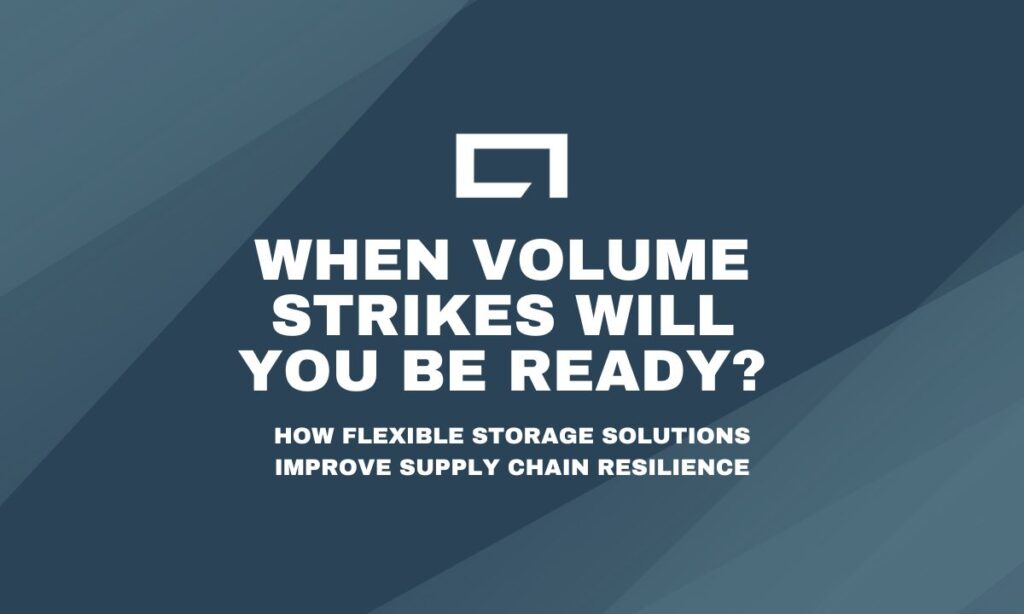News
Storage as Strategy: How Flexible Storage Solutions Improve Supply Chain Resilience

When supply chain leaders discuss optimization, they usually focus on transportation efficiency or warehouse throughput. But a critical piece of the puzzle that often gets overlooked isstorage strategy.
Storage isn’t just overflow space in today’s high-variability environment marked byuncertainty, volume fluctuations, labor disruptions, and shifting trade lanes. It’s a strategic asset that can help you avoid penalties, move faster when plans shift, and reduce downstream risk.
The Cost of Waiting
Storage decisions are often reactive.
• A terminal reaches capacity.
• A shipment gets bumped.
• A labor action slows port throughput.
Only then does the scramble for storage begin—and at that point, options are limited and costs are high.
The more effective approach? Plan for volatility before it hits. By building intentional, flexible storage options into your network, you’re not overcommitting—you’re gaining operational control.
Benefits of a Proactive Storage Strategy
Storage done right helps you:
• Avoid detention and demurrage by shifting freight from congested ports or rail yards to lower-cost inland locations
• Preserve velocity by freeing up warehouse space during volume surges
• Adapt faster to tariff changes or trade policy shifts
• Reduce cost exposure by eliminating panic-driven last-minute moves
• Build optionality into how and where you store, stage, or redirect freight
In short, storage becomes more than just space—it becomes a planning tool.
Examples of Strategic Storage in Action
Forward-looking companies are applying storage strategy to their operations:
A 3PL working with multiple CPG brands pre-books scalable space near distribution hubs ahead of peak season. When consumer demand fluctuates, they can absorb inventory locally rather than congesting the central DC.
A shipper importing from Asia commits to storage space at two regional depots. When delays hit the West Coast, they shift volume inland and save on port fees while keeping goods closer to the point of fulfillment.
A retail chain with a growing e-commerce business uses storage to create breathing room, freeing up space in the main warehouse and using depots as a staging area before the products hit the floor.
One customer planning a major facility build was able to scale back their yard investmentthanks to a depot partnership. With nearby storage and staging available on demand, they reallocated that capital to increase warehouse capacity instead.
Another customer facing internal budget constraints used depot storage to pre-position freight, bringing goods into the warehouse only when capacity opened up. This strategy allowed them to meet volume demand without expanding their physical footprint.
And some companies use depot storage regularly—not just in a crisis, but as part of their everyday rhythm. That repetition builds muscle memory into the network, so when volatility hits, the team is already primed to respond quickly.
These tactics aren’t short-term workarounds. They’re deliberate, cost-smart decisions that build resilience into the supply chain and give logistics teams more control when conditions change.
Aligning with Today’s Budget Pressures
We know supply chain teams are tasked with doingmore with less. Teams are urgently required to drive efficiency, cut costs, and deliver results quarter after quarter. That’s why modern storage planning isn’t about paying for unused space. It’s about structuring flexibility.
Here’s how:
• Set regional thresholds: Plan access at key sites where you’re most likely to hit volume or congestion issues
• Prioritize access, not just square footage: Build relationships with providers who can flex with your needs, not just sell space
• Model “if/then” triggers: Work with partners to predefine when storage kicks in (e.g., if rail dwell exceeds X, divert to depot Y)
• Look for network partners, not just landlords: The best storage providers don’t just hold containers—they help you think through flow, staging, and throughput
Planning for Disruption is Just Good Business
Whether it’s a new round of tariffs, a Gulf Coast hurricane, or a union slow-down, the supply chain keeps proving one thing: you can’t always predict disruption—but you can plan for it.
We’ve seen companies shift from treating storage as a cost center to seeing it as a predictability tool. They’re not overcommitting—they’re building control levers into their network.
And when disruption hits? They’re not scrambling; they’re executing.
Ready to Talk Storage Strategy?
ConGlobal operates one of the largest depot and terminal networks in North America. We partner with shippers, 3PLs, and retailers to design storage strategies that reduce risk, lower costs, and improve operational performance.
Whether you need consistent storage volume across multiple sites or flexible access tied to seasonal or tariff-driven needs, we’re here to help.
Let’s talk about building a storage strategy that gives you more control, flexibility, and cost predictability. Because when the market shifts—and it will—having the right storage plan in place means you’re not reacting, you’re ready.
Jay Schmidt | jschmidt@conglobal.com, 402-201-7980

